From the end of August, Binh Trieu 1 Bridge began to enter the stage of lifting the clearance using a synchronous hydraulic shock system. This is the first method applied in the city, allowing the entire construction weighing tens of thousands of tons to be raised without having to dismantle or rebuild.
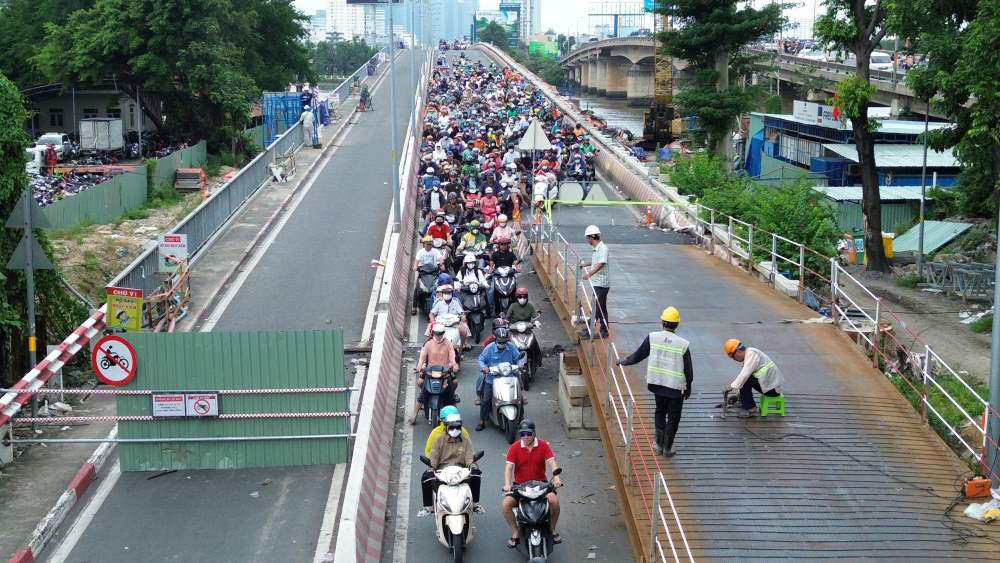
To ensure the safety of the project and limit congestion, cars were adjusted to Binh Trieu 2 bridge, while motorbikes still traveled through Binh Trieu 1 bridge. The solution to maintain the two-wheel traffic flow is to install two temporary steel bridges at the entrance and exit at Binh Trieu 1 bridge.
The temporary bridge is designed in two parts, connected by a sidewalk; one end is fixed at the bridge abutment, the other end is guarded on the bridge span being raised. When the main bridge span gradually reaches a height of 1.07m, the temporary bridge acts as a flexible joint, helping motorbikes to cross the high difference safely and smoothly.
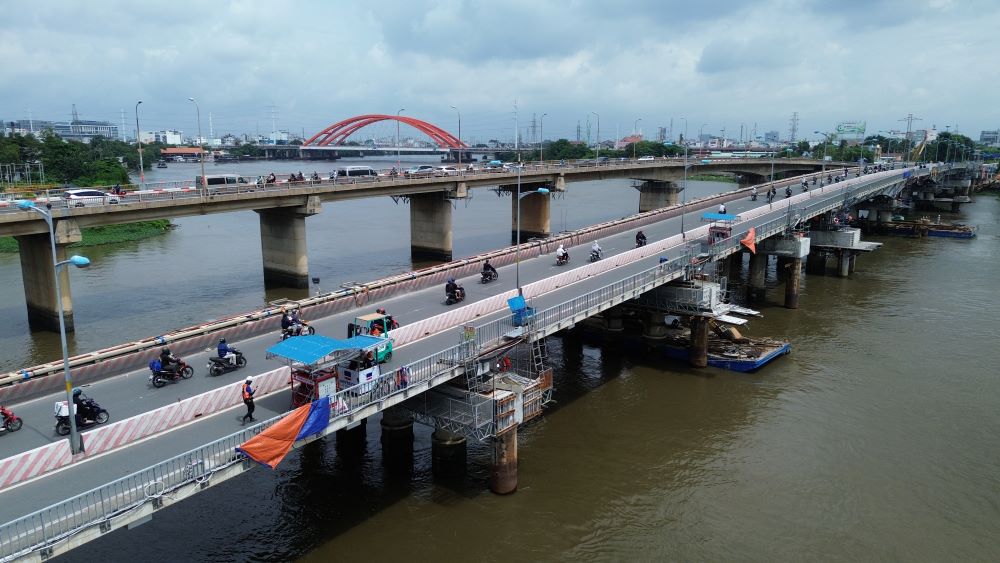
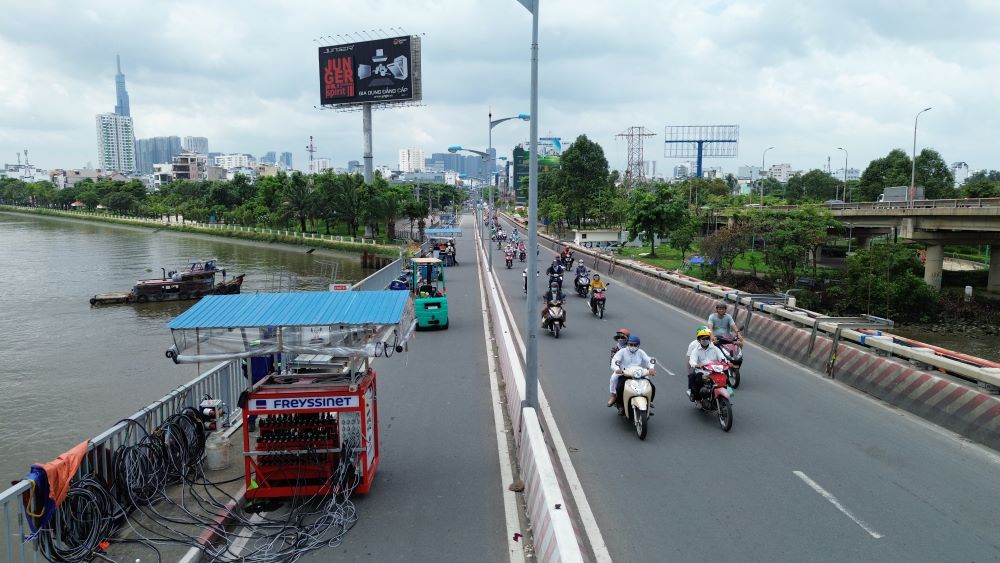
According to the Ho Chi Minh City Department of Construction, "lifting bridges" is a solution to replace demolition or new construction. The engineers placed a shock system under the girder and bridge piers, simultaneously pushing each span up. Each turn only raises about 4cm, then adds a flat surface to keep it stable. The entire tricycle system is controlled synchronously, ensuring the bridge is raised evenly, without warping or affecting the road surface. After reaching the design height, the structure will be reinforced with new pillars and pillows to ensure long-term safety.
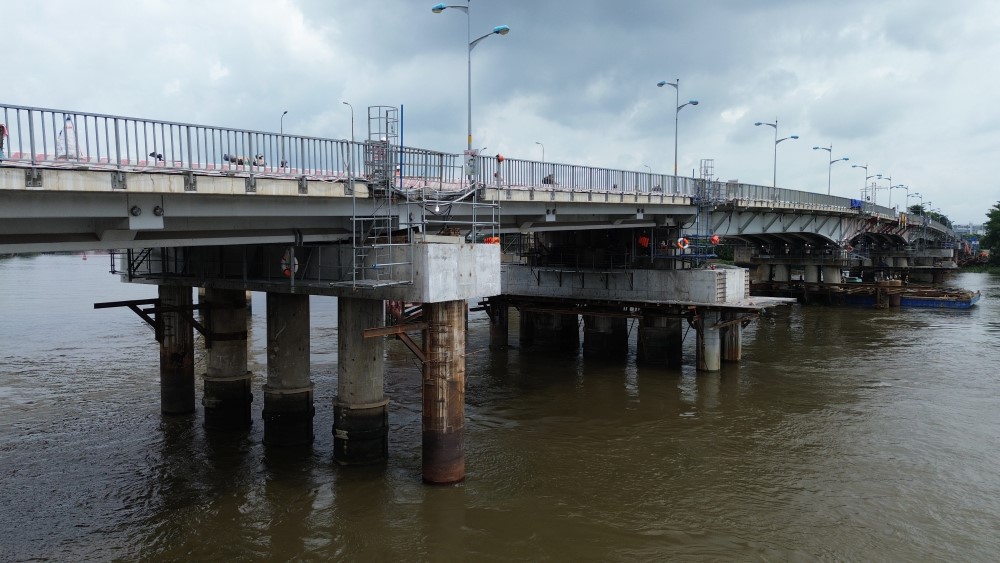
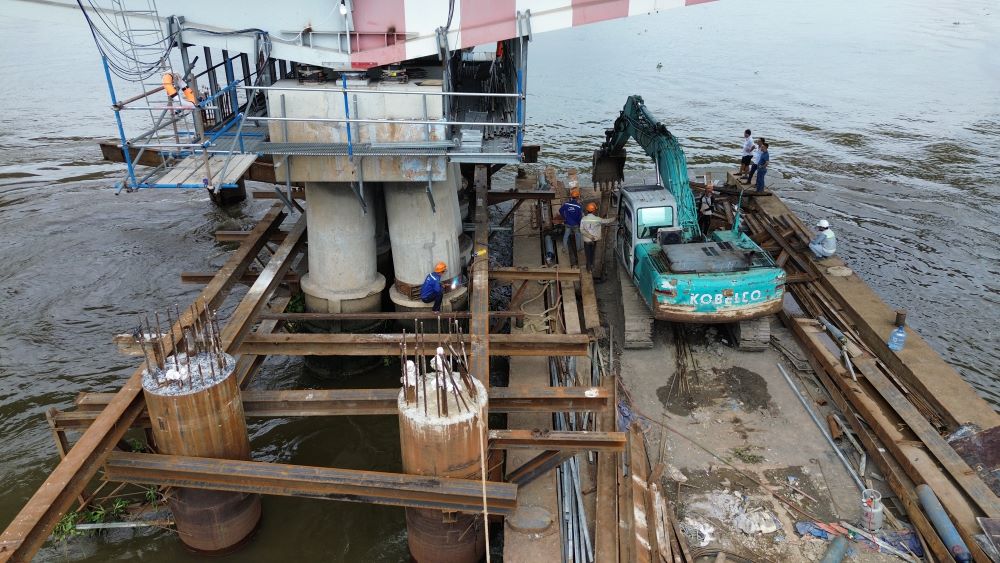
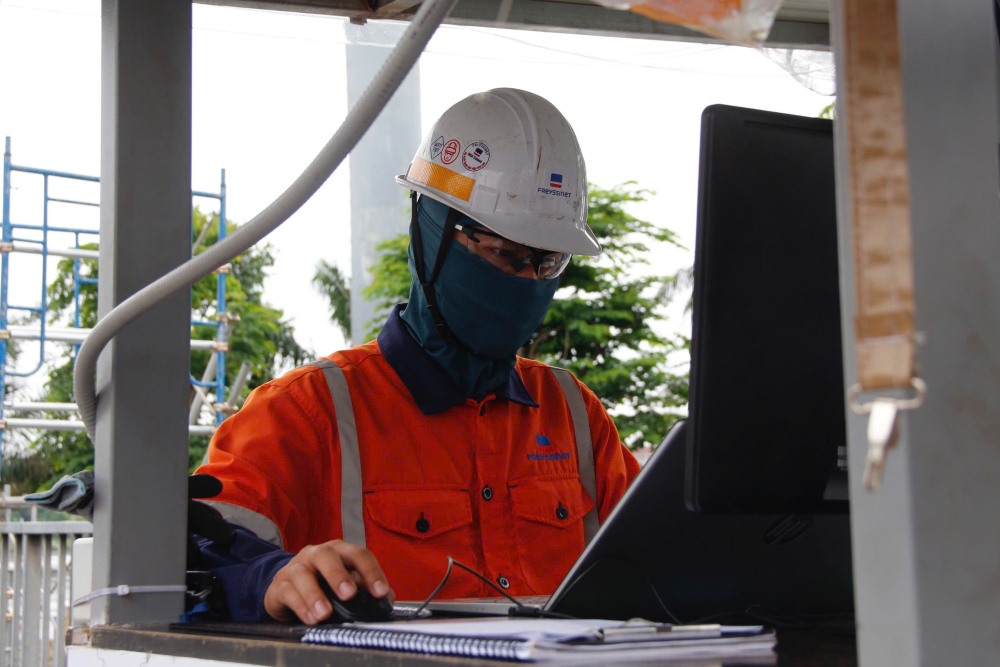
Binh Trieu 1 Bridge has 19 steel spans, with a total weight of about 11,000 tons. The contractor arranged 106 hydraulic strokes, dividing the span into 4 cones to raise the order. Up to now, the bored pile and beam items have been basically completed. The bridge raising work started on August 23 and is expected to be completed by the end of November 2025.
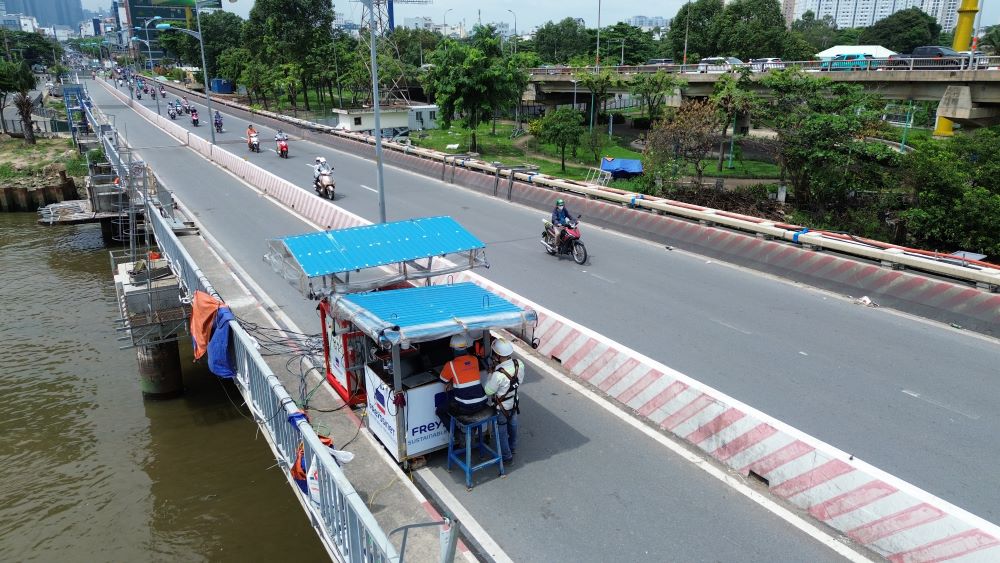
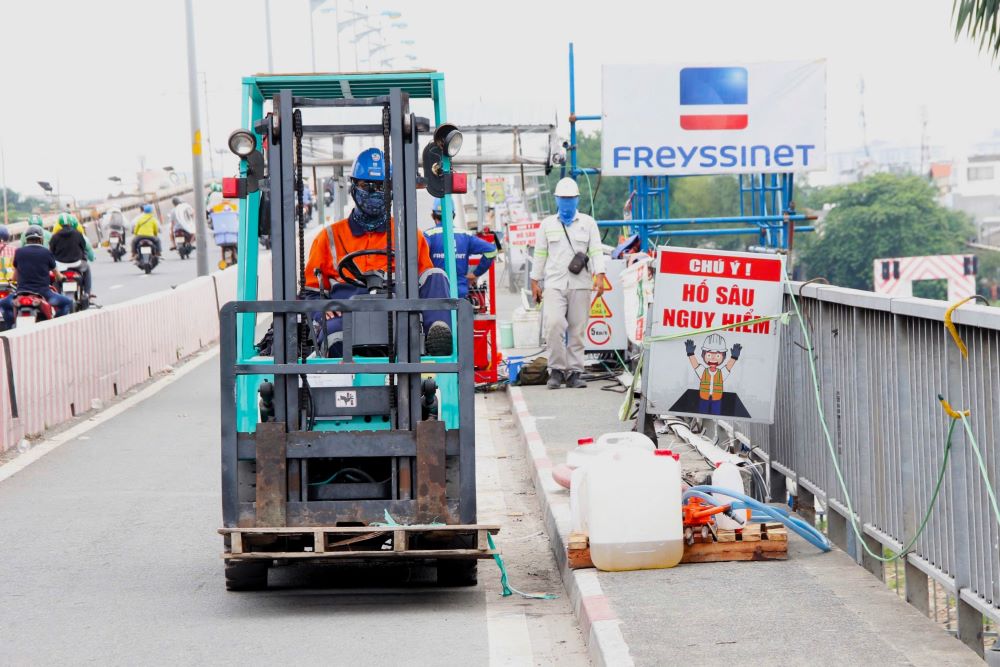
During the construction period, waterway traffic on the Saigon River was not interrupted. On the ground, the authorities have planted markers and divided the lane on Binh Trieu 2 bridge to regulate cars, reducing congestion during rush hour.
Previously, due to the clearance lower than Binh Trieu 2 Bridge, Binh Trieu 1 Bridge had a number of ship collisions. After completion, the bridge will have a clearance of 7m, synchronized with the neighboring bridge, ensuring safety for the maritime route.
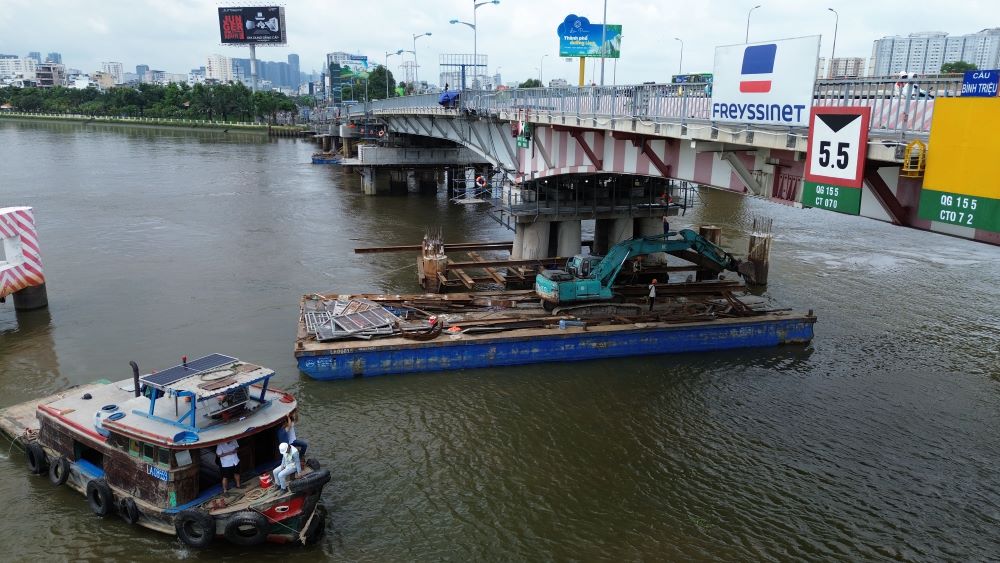
The project to raise the clearance of Binh Trieu 1 Bridge has a total investment of 132 billion VND, which is considered to be significantly less costly than the new construction plan. In parallel, Binh Phuoc 1 Bridge on National Highway 1 will also be raised by 1.25m, expected to be completed by the end of this year.
After the Binh Trieu 1 project is completed, the city will evaluate the overall to select other bridges with low clearance to include in the upgrade plan.
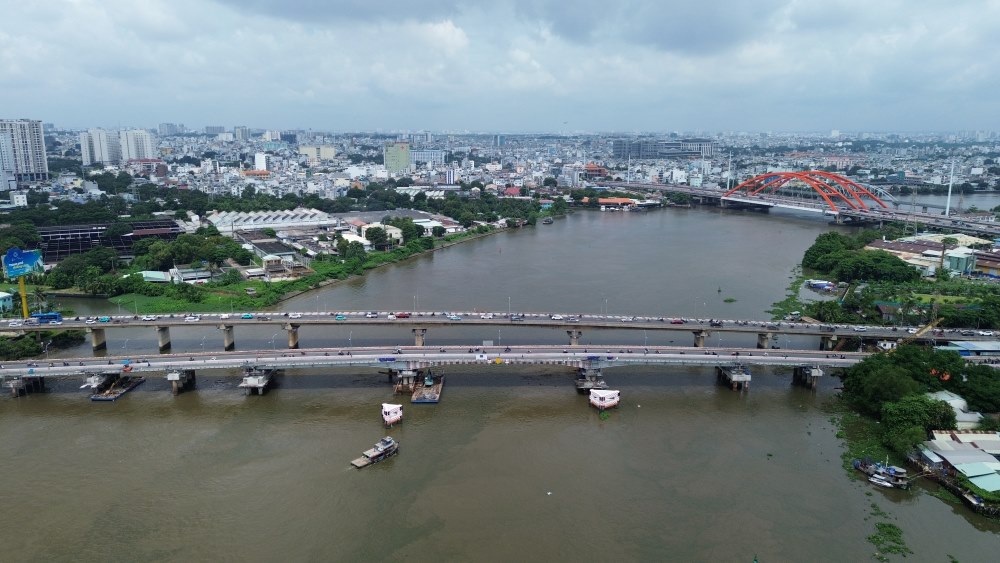
Binh Trieu 1 and 2 bridges are currently an important gateway connecting Ho Chi Minh City with Binh Duong and the Southeast provinces. The implementation of bridge raising technology will both maintain traffic and ensure water flows, contributing to the completion of infrastructure, meeting the needs of urban development in the coming years.







